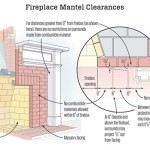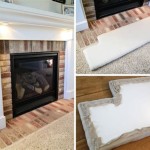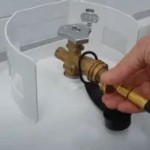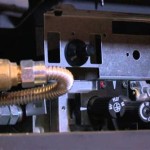Converting A Gas Fireplace To A Wood Burning Stove: A Comprehensive Guide
Many homeowners find themselves contemplating a change from a gas fireplace to a wood-burning stove. This transition can be motivated by a desire for a more authentic heating experience, a longing for the visual appeal of a real wood fire, or a pursuit of greater energy independence. However, converting a gas fireplace to a wood-burning stove is not a simple swap and requires careful planning, adherence to safety regulations, and often, professional assistance. This article will detail the key steps and considerations involved in such a conversion.
Before embarking on this project, a thorough understanding of the existing gas fireplace setup is necessary. This includes identifying the type of gas fireplace, the venting system in place, and the dimensions of the firebox. Gas fireplaces generally use either direct-vent or ventless systems. Direct-vent fireplaces draw combustion air from outside and exhaust directly outdoors, while ventless units burn room air and release combustion byproducts into the living space. Ventless units are generally not suitable for conversion to wood-burning stoves due to safety concerns related to indoor air quality.
Furthermore, the existing gas line will need to be capped off and disconnected safely. This is a task best left to a qualified gas technician, ensuring that there are no gas leaks and that all safety protocols are followed. Ignoring this step can lead to dangerous gas buildup, posing serious risks of explosion or carbon monoxide poisoning.
Local building codes and regulations play a crucial role in the conversion process. These regulations dictate the permissible types of wood-burning stoves, venting requirements, clearances to combustible materials, and other safety measures. Contacting the local building department is essential to obtain the necessary permits and ensure compliance with all applicable codes. Failure to comply with these regulations can result in fines, delays, and even the requirement to undo the conversion.
Key Point 1: Chimney and Venting Considerations
The chimney and venting system are arguably the most critical aspects of converting a gas fireplace to a wood-burning stove. Gas fireplaces and wood-burning stoves have significantly different venting requirements. Gas fireplaces often use smaller, less robust venting systems compared to the larger, Class A insulated chimneys required for wood-burning stoves. Wood-burning stoves produce higher flue gas temperatures and more creosote, a flammable byproduct of combustion, requiring a chimney system designed to withstand these conditions.
A typical gas fireplace vent is made of B-vent or a smaller direct-vent pipe. These are not designed for the high temperatures and corrosive byproducts of wood combustion. Using an existing gas vent for a wood-burning stove is a serious fire hazard and should never be attempted. A new, properly sized and installed Class A insulated chimney is almost always required.
The size of the chimney flue is also important. An improperly sized flue can lead to inadequate draft, resulting in smoky fires and potential carbon monoxide buildup in the home. The manufacturer's specifications for the chosen wood-burning stove will dictate the correct flue diameter. Professional chimney sweeps or installers can assess the existing chimney and recommend the appropriate size and type of chimney liner, if necessary.
Installing a Class A chimney involves careful planning and execution. The chimney must extend at least three feet above the highest point of the roof within ten feet horizontally and must be properly supported and secured. Clearances to combustible materials, such as framing and roofing, must be strictly maintained to prevent fires. Proper installation often requires cutting through walls or ceilings, making it a complex undertaking that is best handled by experienced professionals.
Key Point 2: Selecting the Right Wood Burning Stove
Choosing the right wood-burning stove is another essential step in the conversion process. Wood-burning stoves come in various sizes, styles, and efficiency ratings. The appropriate size of the stove depends on the size of the area to be heated, the insulation levels of the home, and the climate in which the home is located. Over-sizing the stove can lead to overheating and discomfort, while under-sizing it may result in insufficient heating.
EPA-certified wood-burning stoves are highly recommended. These stoves meet stringent emissions standards, burning wood more efficiently and producing less pollution. They are also generally safer and more user-friendly than older, non-certified stoves. The EPA website provides a list of certified stoves and their efficiency ratings.
Consider the style and design of the stove as well. Wood-burning stoves are available in various finishes and aesthetics, from traditional cast iron models to modern steel designs. Choose a stove that complements the décor of the home and fits within the existing fireplace opening, if possible. Measure the firebox opening carefully to ensure that the chosen stove will fit properly.
Factors like firebox size, burn time, and ash removal system should also be considered. A larger firebox allows for longer burn times between refueling, while an efficient ash removal system makes cleaning the stove easier. Researching different models and reading reviews can help in making an informed decision.
Key Point 3: Installation and Safety Precautions
The installation of a wood-burning stove involves several crucial steps, including preparing the firebox, installing the stove, connecting the chimney, and testing the system. Before installing the stove, the firebox must be properly prepared. This may involve removing the existing gas fireplace components, cleaning the firebox, and ensuring that the floor is adequately protected with a non-combustible hearth extension. The hearth extension must meet the minimum size requirements specified by the stove manufacturer and local building codes.
The stove must be positioned correctly within the firebox, maintaining the required clearances to combustible materials. These clearances are typically specified in the stove manufacturer's installation manual. Using heat shields can reduce the required clearances in some cases, but they must be installed according to the manufacturer's instructions.
Connecting the stove to the chimney requires careful attention to detail. All joints must be properly sealed and secured to prevent leaks of smoke and carbon monoxide. A chimney adapter may be needed to connect the stove's flue collar to the chimney liner. Ensure that the adapter is the correct size and type for the stove and chimney liner.
Once the stove is installed and connected to the chimney, it is essential to test the system thoroughly. This involves lighting a small fire to check for proper draft and to ensure that there are no leaks. A carbon monoxide detector should be installed in the room where the stove is located to provide early warning of any potential carbon monoxide buildup. Schedule a professional inspection by a qualified chimney sweep or installer to verify that the installation is safe and compliant with all applicable codes.
Operating a wood-burning stove safely requires ongoing maintenance and responsible practices. Regularly inspect the chimney for creosote buildup and have it cleaned by a professional chimney sweep at least once a year, or more frequently if necessary. Burn only dry, seasoned wood to minimize creosote production and maximize efficiency. Never burn trash, treated wood, or other materials that can release harmful pollutants into the air. Keep a fire extinguisher nearby and know how to use it in case of a fire. Educate all household members on the safe operation of the stove and the importance of carbon monoxide detection.
The process of converting a gas fireplace to a wood-burning stove is a complex endeavor that necessitates a comprehensive understanding of building codes, safety regulations, and stove functionality. While it offers the potential for a more authentic heating experience and increased energy independence, it also requires a significant investment of time, resources, and expertise. Engaging qualified professionals for tasks such as gas line disconnection, chimney installation, and stove inspection can significantly mitigate risks and ensure a safe and efficient conversion.
Regular maintenance and responsible operation are paramount for the continued safety and efficiency of a wood-burning stove. A well-maintained stove and chimney system not only provide warmth and ambiance but also contribute to a healthier and safer living environment. By adhering to best practices and prioritizing safety, homeowners can enjoy the benefits of a wood-burning stove while minimizing potential hazards.

Can You Convert A Gas Fireplace To Wood Burning Stove Direct Stoves Resources

Converting A Fireplace To Wood Burning Stove Chesneys

Gas To Wood Fireplace Conversion Overland Park Ks Firplace Service

Want To Convert Gas Wood Fireplace Full Service Chimney

Wood Burner Conversion New Jersey Fireplaces Kjb

Want To Convert Gas Wood Fireplace Full Service Chimney

Converting A Fireplace To Wood Burning Stove Chesneys

Converting Open Fire To A Wood Burning Stove In Exeter Simon Turner Showrooms Devon

Tips Tricks About Travel Indoor Gas Fireplace Insert Logs

Convert Fireplace To Wood Burning Stove Mantel Gas Back Bu








